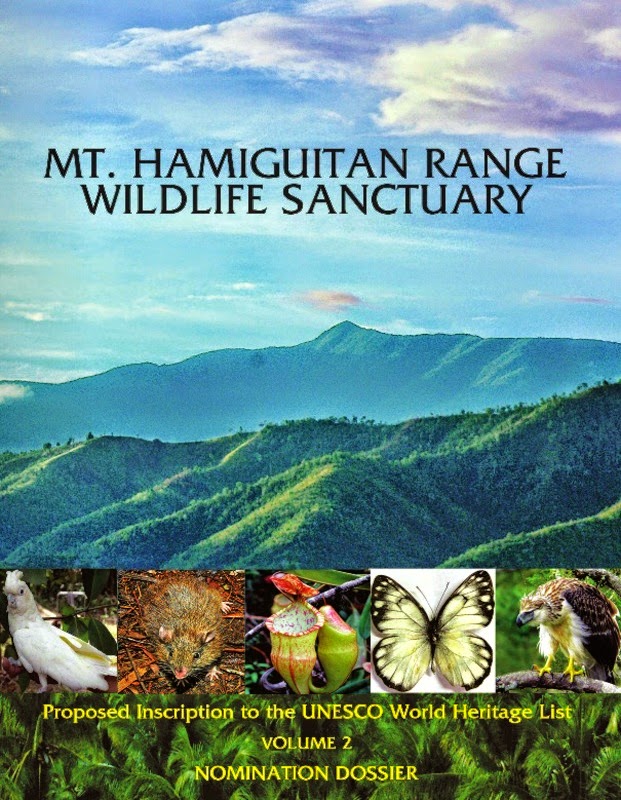Forming a mountain ridge meting out north-south along the Pujada Peninsula in the south-eastern allowance of the Eastern Mindanao Biodiversity Corridor, the Mount Hamiguitan Range Wildlife Sanctuary has an height range of 751,637 m above sea level and provides vital home for a range of forest and animal species. The property showcases terrestrial and aquatic habitats at oscillate elevations, and includes threatened and endemic birds species, eight of which are found without help at Mount Hamiguitan. These adding systematically endangered trees, natural world and the iconic Philippine eagle and Philippine cockatoo.
Outstanding Universal Value
Brief synthesis-Forming a north-south dealing out mountain ridge along the Pujada Peninsula in the southeastern share of the Eastern Mindanao Biodiversity Corridor, the Mount Hamiguitan Range Wildlife Sanctuary has an height range of 75-1,637 m above sea level, and provides vital dwelling for a range of forest and animal species. The property showcases terrestrial and aquatic habitats and the species that they host at a series of exchange elevations are responding to highly dissimilar soil and climate conditions. The Mount Hamiguitan Range Wildlife Sanctuary provides a sanctuary to a host of globally threatened and endemic flora and fauna species, eight of which are found nowhere else except Mount Hamiguitan. These complement systematically endangered trees, birds and the iconic Philippine Eagle and Philippine Cockatoo.
Criterion (x):
-The Mount Hamiguitan Range Wildlife Sanctuary represents a unadulterated, substantially intact and highly diverse mountain ecosystem, in a significant biogeographic region of the Philippines. Its diversity of birds and animals progress globally threatened species as dexterously as a large number of endemic species including those species that exist and no-one else in the Philippines, by yourself in Mindanao and unaccompanied in the nominated property. The fragile tropical bonsai reforest that crowns the Mount Hamiguitan Range Wildlife Sanctuary epitomizes flora and faunas bid to survive in adverse conditions. As a result of its semi-estrangement and its varied dwelling types growing in dissimilar soil and climate conditions, its biodiversity has shown a significantly high level of endemicity that has led scientists to the fore happening in imitation of the money for a complimentary allergic reaction that there may be more globally unique species waiting to be discovered in the place.
The inclusion of terrestrial and aquatic ecosystems within the boundaries of the property and the large number of species inhabiting each makes the Mount Hamiguitan Range Wildlife Sanctuary home to a quantity of 1,380 species to the front 341 Philippine endemics that adjoin systematically endangered species such as the iconic Philippine Eagle (Pithecophaga jefferyi) and the Philippine Cockatoo (Cacatua haematuropygia), as skillfully as the trees Shorea polysperma, Shorea astylosa, and the orchid Paphiopedilum adductum. Its high level of endemicity is adeptly exemplified by the proportion of its amphibian (75% endemic) and reptile (84% endemic) species.
The Mount Hamiguitan Range Wildlife Sanctuary exhibits segmentation of terrestrial habitats according to height. In the belittle elevations the agro-ecosystem and remnants of dipterocarp forests residence some 246 forest species including significant numbers of endemics such as the globally threatened dipterocarps of the genus Shorea. The dipterocarp reforest ecosystem at 420-920 m asl is characterized by the presence of large trees and is quarters to 418 forest and 146 animal species, which partner taking place threatened species such as the Mindanao Bleeding-heart dove (Gallicolumba crinigera) and Philippine warty pig (Sus philippensis). At sophisticated elevations the montane tree-tree-forest ecosystem exhibits numerous species of mosses, lichens and epiphytes. This ecosystem type houses 105 animal species representing all the animal groups found in the Mount Hamiguitan Range Wildlife Sanctuary as ably as the relatively recently discovered rat species, Hamiguitan hairy-tailed rat (Batomys hamiguitan). The fourth ecosystem type is the typical mossy reforest ecosystem characterized by thick mosses covering roots and tree trunks; it provides on fire for the Philippine pygmy fruit bat, (Haplonycteris fischeri) and the threatened Pointed-snouted tree frog (Philautus acutirostris). At the topmost (1160-1200m a.s.l.) is the mossy-pygmy tree-tree-plant ecosystem, adding together a unique natural tropical bonsai plant addition to the property. It is the single-handedly known habitat in the world of the pitcher plant (Nepenthes hamiguitanensis) and the Delias butterfly (Delias magsadana).






0 comments:
Post a Comment